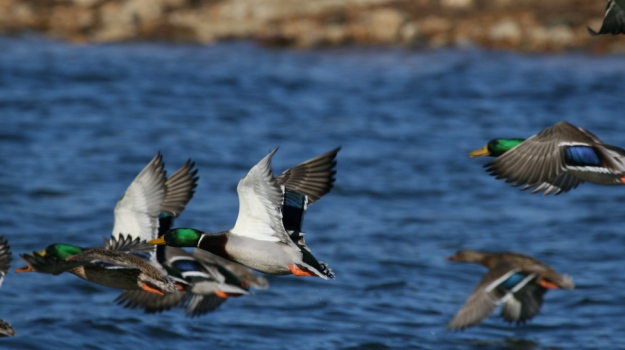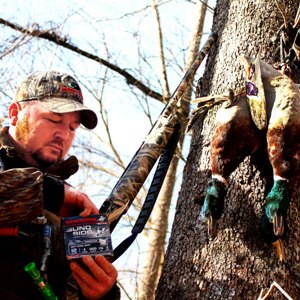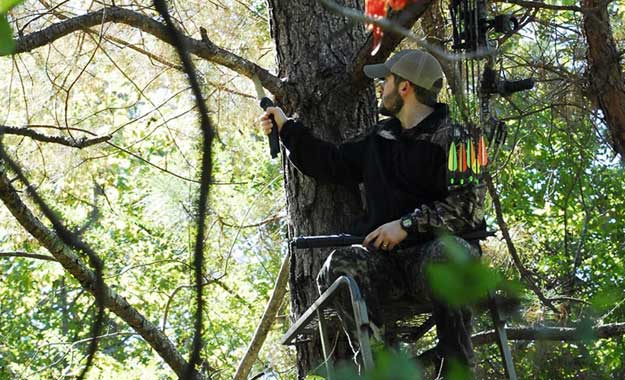
The majority of ducks we take in our section of Kentucky are mallards, pintail and gadwalls. If we’re hunting diving ducks, we’ll be taking bluebills, ring-necks, wigeons, redheads and canvasbacks. But we don’t see those ducks until later on in the year when the weather gets really cold.
I’m often asked, “How many days do you hunt if you’re hunting private land?” We’re fortunate in that the land we hunt has a pit in a cornfield and several blinds in the woods (flooded timber). So, if we shoot the ducks in one spot in the morning, we’ll get out of that place as early as we can, to allow the ducks to return there. We may let that site rest for 2 or 3 days, or as much as a week with no hunter activity, while we’re hunting another one of our hot spots. We try to never overhunt our private-land places. We can have two or three hunts on different sections of that private land each week. The worst thing you can do if you’ve got a productive private-land, duck-hunting spot and want to hunt it all season is to hunt that same site on 2 or 3 consecutive days.
 Something I’m looking forward to this year is that we have some private land that we can hunt that’s flooded when the fall and winter rains come. This year there’s an exceptionally large crop of acorns. We have some duck holes (open-water places) where ducks can drop in to the timber and feed on those acorns. We can control-flood these lands when duck season comes in, and then drain the water off the land when duck season’s over. Once those acorns start to float, the ducks will come, feed, roost and hold in that flooded timber feeding on those acorns. We enjoy some unbelievable duck hunting in those spots.
Something I’m looking forward to this year is that we have some private land that we can hunt that’s flooded when the fall and winter rains come. This year there’s an exceptionally large crop of acorns. We have some duck holes (open-water places) where ducks can drop in to the timber and feed on those acorns. We can control-flood these lands when duck season comes in, and then drain the water off the land when duck season’s over. Once those acorns start to float, the ducks will come, feed, roost and hold in that flooded timber feeding on those acorns. We enjoy some unbelievable duck hunting in those spots.
Most of the puddle ducks we get are places 40 to 50 miles to the east of us, and they’re coming off the Ohio River. When we’re hunting diving ducks, we’ll hunt Kentucky and Barkley lakes. We have 3000 acres with a good mix of hardwood timber and croplands on that acreage that we can control-flood before and during waterfowl season. Only seven of us are permitted to hunt this property. We don’t flood all the land at one time. We have levees built, so that as the winter rains fall, more and more of that water backs up onto our land.
We plant primarily corn. Once the corn is harvested, we always leave three to five rows standing with corn still on the stalks. Once the rest of the corn is harvested, we go through the fields and bush-hog the stubble that’s left after the corn’s been cut. As the water floods the cornfields, the places where the corn has been cut really will look good to the ducks when they fly over. As I’ve mentioned, we’ve had a very good acorn crop this year - 2016. So, there should be plenty of food available for the waterfowl. Also in the middle of one of the cornfields, we have an island that’s about 20-yards long and 30-yards wide where we have our pit. When we set-up to shoot out of the pit, we’ll put out some full-bodied duck and goose decoys standing on the island. Then we put our floating decoys out in the water behind our standing decoys for a lot of success.
Day 3: Finding Public Land Ducks with Mossy Oak Pro Richie McKnight
Tomorrow: Remembering the Early Days of Mossy Oak with Bill Zearing of Cody Calls




























